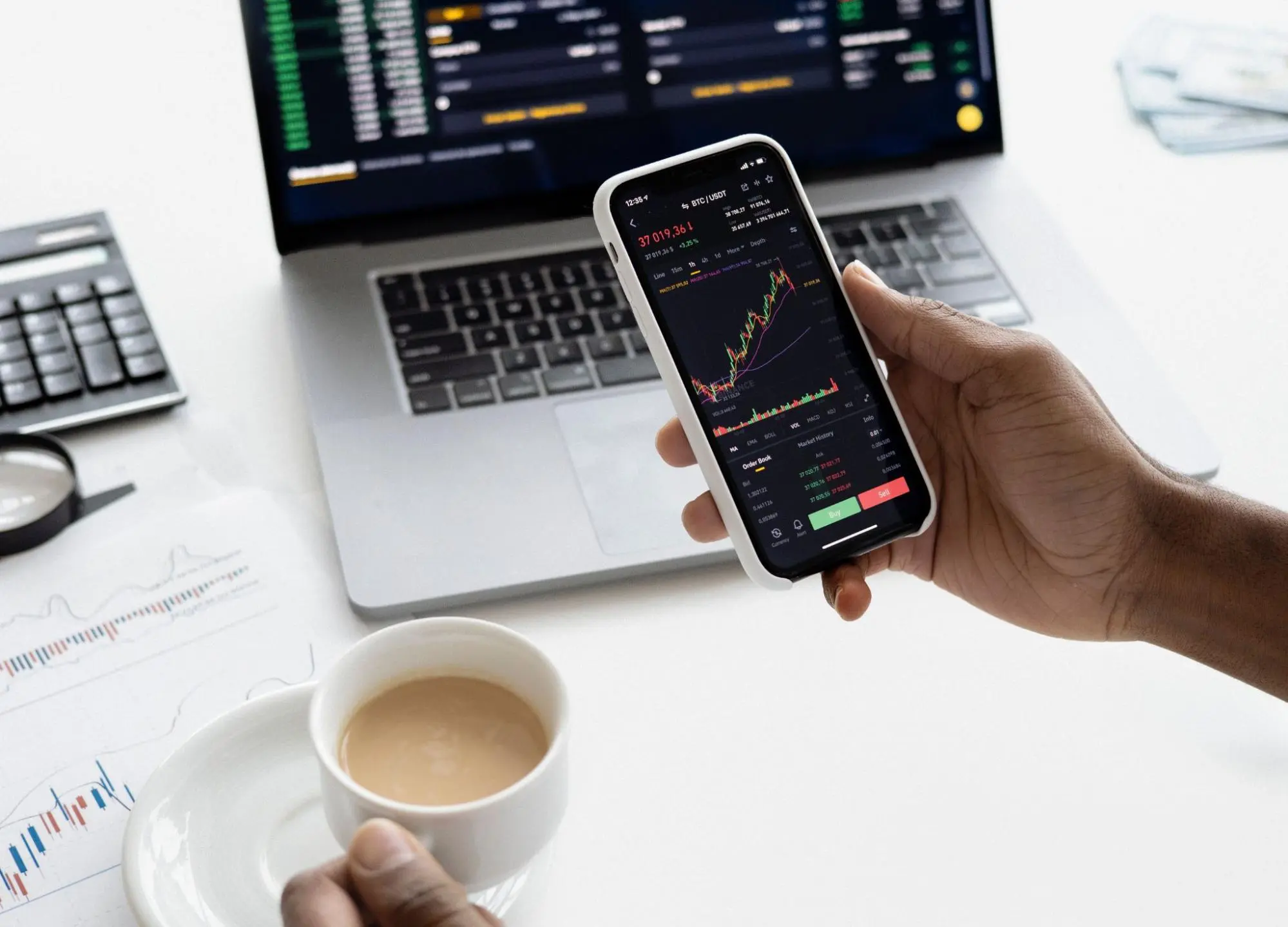Margin Call in Crypto Trading & How to Avoid it

crypto basics
Margin call can be a profitable strategy for traders looking to maximize their profits. However, with great rewards come great risks, and one of the most significant ones in margin trading is the dreaded margin call.
If you’re not acquainted with this term, don’t worry—you’ve come to the right place!
In this article, we’ll explain this term in detail, including why it occurs and, most importantly, how to manage and avoid it.
So, let’s get started!
What is Margin Trading?
Margin trading occurs when you want to get an asset without paying the full price for it. This doesn’t mean you can avoid paying; it means you will have to borrow the money from a broker of your choice. This way, you don’t have to pay the full asset price right away. Traders will usually do this when prices fluctuate a lot and there’s a high chance to benefit from it, but you don’t have enough funds.
In trading, there are four types of margins: margin call, initial margin, variation margin, and maintenance margin. However, we will focus on the required margin, which represents the money you need to be able to open a position in trading.
For the required margin, you need to understand what leverage and leverage ratio are. In short, leverage is a tool traders use when they want to make small investments and get big returns.
Keep in mind that leverage and margin sound similar, but they aren’t the same.
The leverage amount you are using for the required margin is represented in a leverage ratio, which is a metric that can help you deduce a company’s financial ability to meet its debt obligations in the long run. If the company can meet the requirements, great.
If it doesn’t seem like it will be able to withstand the combination of debt and equity during its business, then it’s too risky to invest.
The ratio can show you whether the company has what it takes or whether you should move on to a different investment.
Margin can be used at either a net or gross level. With net margin, you borrow only as much money as is needed to purchase securities. When it comes to gross margin, you borrow an amount equal to 100% of the value of those securities purchased with borrowed funds.

Margin Level
The margin level is the amount of equity required at a specific price. It’s calculated by taking the margin value and dividing it by the number of shares you want to buy or sell. The level of margin required for your position depends on two things: the price of the underlying asset and your broker’s margin requirements.
You can calculate a margin level by dividing the margin rate by the current market price. For example, if you have $1,000 in your account and want to purchase 100 shares of stock at $17 per share, here’s how you would calculate your margin level:
- $1,000/100 = 10%
This means that if the stock price drops 10% below its current price (in this example, to $15), you will be automatically liquidated.
What is a Margin Call?
A margin call is a broker’s demand to deposit additional funds or securities to cover losses. The purpose of this requirement is to protect against the possibility of the trader leaving the broker to hold assets worth less than what the trader borrowed.
In other words, when you make money by borrowing from your broker (margin trading), it’s not just about paying interest on those funds—you also need to maintain enough equity so that if things go south, you can still pay back the loan with interest.
When a margin call happens, the investor has two options: sell some of the assets they have in their account or add more money to it.
Why do Margin Calls Occur?
A margin call happens when there’s not enough collateral left after an asset has fallen below the maintenance level set by either yourself or your exchange platform (if they offer one). In crypto trading specifically, this often happens because prices have significantly dropped since you bought them.
This means there’s now less value tied up in those assets than before, so when they go down due to market volatility, your account may be forced into liquidation mode. It can happen because there will not be enough money left after each sale transaction.
Margin calls can also happen when a stock increases in value and accounts that sold the stock short begin to encounter increasing losses. If a trader doesn’t deposit money, brokers may force the trader to sell assets regardless of the market prices so you can meet the margin call.
A margin call can be devastating for crypto traders. Whether you’re trading Ethereum, Tether, Cardano, or any other coin, it can happen suddenly, forcing you to sell your holding at a loss if you don’t have enough cash in your account to cover the margin requirement.
In short, margin trading is risky because it involves leverage (borrowing money) with very little collateral backing up the loan. You could end up losing more than your initial investment when trading on margin, or even worse—losing everything you accumulated.
Margin Call Example

A margin call occurs when the value of your investment drops below a certain point. The exchange will notify you and require that you deposit more funds immediately, or else they will liquidate your position at whatever price is available on the market at that time.
If a trader’s account balance is less than what their margin trading contract requires, this is what we call a “margin call.” In case an investor’s total asset value falls below their maintenance level (or maintenance margin) on the exchange, it triggers a margin call alert.
If they don’t deposit more money into their account within 24 hours, their position will be closed out automatically by the exchange itself, and they won’t get any compensation for their losses.
How to Manage a Margin Call
Although it sounds scary, a margin call is a natural part of trading, and it can be avoided with proper management. If you receive a margin call, here’s what you can do:
- Sell some of your stocks to reduce the margin requirements. This will help eliminate or reduce the amount you need to deposit into your account. However, this may not be an option if it would cause other positions in your portfolio to become negative due to market movements while they were being sold off first.
- Deposit more money into your account. This will allow for additional buying power on top of what was available before receiving a margin call notice. However, it doesn’t guarantee success since there might still be insufficient funds available after buying back all securities at market prices.
- Borrow from friends or family members. Whether through an informal verbal agreement or by signing a formal document to be sure everything is under control, you can try borrowing money from your friends if you’re in dire need. Just make sure everyone is on the same page.

How to Avoid a Margin Call
There are a few ways to avoid a margin call in trading. Here are some of the best practices you should keep in mind:
- Use stop loss and limit orders. Stop loss orders automatically sell an asset when its price reaches a certain level (usually dictated by its current value after fees). Limit orders allow users to specify how much they want an asset’s price point before selling off any holdings. However, these tend to poorly perform when markets are quickly moving because prices may reach their limit before filling due to high volatility during rapid movements.
- Don’t use leverage. If you’re not careful, you can lose more than your original investment in cryptocurrency. For example, if an investor puts down $1 and borrows another $10 to buy Bitcoin at $10,000 per coin, and the price drops to $9,000 before they sell their position, that’s already 20% less than what they started with.
- Don’t trade with borrowed money. Margin trading is a risky business, and there are many ways to lose money with it. One of the most common mistakes is using leverage (borrowing money) when you have no idea what you’re doing. That’s why it’s important to learn everything you can about margin calls before you start trading on a more serious level.
- Don’t trade with the amount that’s not comfortable for you to lose it. If you want to avoid a margin call, the first thing you need to do is make sure you’re not trading more than what you can afford to lose. This means that if the market goes against your position, it shouldn’t take away from other investments in your life.
- Never use your margin to buy a currency that’s not in your portfolio. A diversified portfolio is better than having all your eggs in one basket, so don’t put too many of your funds into one currency. This will also help you avoid getting trapped into losing more money than you can afford if the price drops suddenly and drastically because you won’t be relying on one asset only.
Even if your asset recovers later on, there won’t be any profit left because all profits were already used up by previous losses from selling them at below-market rates due to forced liquidation during a margin call event.
Key Takeaways
A margin is a borrowed amount that you can use to make investments. It allows you to trade on margin, which means you can take larger positions than would normally be possible with your available net liquid assets. Essentially, the margin is a loan from your broker.
We hope this article helped you understand what a margin call is and how it can affect your trading. The most important thing to remember is that a margin call is not the end of the world, so don’t panic. You just need to pay attention when it happens and take action accordingly.
Margin Call FAQ
What happens if you get margin called?
If you get your margin called, it means your broker has determined you don’t have enough money in your account to cover all of the positions that were opened by buying on margin. When this happens, the broker will sell off some of your assets to bring the value back up to where it needs to be.
Do you lose money on a margin call?
No, you don’t lose money on a margin call. A margin call is just a requirement to deposit more money into your account so that you have enough collateral to support the position.
Margin calls are designed to protect investors from losing more than they can afford by forcing them to sell off positions when prices drop too quickly or too far below what was paid for them (which happens all the time).
Is trading on margins risky?
The risk of margin is that the value of the assets you are buying may decline. If this happens, you could lose more than your initial deposit.
To trade on margin, you must be aware of how much money you can afford to lose in the event of a market downturn.
You shouldn’t invest money that would cause financial hardship for yourself if it were lost entirely due to trading losses.
Can you delay a margin call?
You can request an extension of time to meet a margin call. If your broker agrees, they’ll give you a new deadline by which to deposit additional funds into your account.
However, this doesn’t mean that they won’t sell some or all of your securities if the market price drops below what they need to meet the margin requirement again before their next payment date.